Diadochi 10: Lysimachus and Seleucus
Diadochi ("successors"): name of the first generation of military and political leaders after the death of the Macedonian king and conqueror Alexander the Great in 323 BCE. To settle the question whether his empire should disintegrate or survive as a unity, and, if so, under whose rule, they fought several full-scale wars. The result, reached by 300, BCE, was a division into three large parts, which more or less coincided with Alexander's possessions in Europe, Asia, and Egypt.
During the next quarter of a century, it was decided whether these states could endure. As it turned out, there were no great territorial changes, although there were dynastic changes. After 280, the period of state-forming came to an end with three great states: Antigonid Macedonia, Ptolemaic Egypt, and the Seleucid kingdom in Asia.
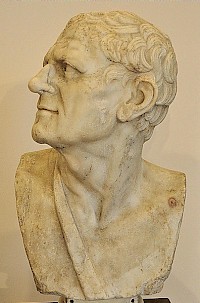
The removal of Demetrius Poliorcetes from the scene in 285 stabilized the situation. It was becoming increasingly clear that there would be three major states: the empire of Ptolemy in Egypt and southern Syria, the empire of Seleucus in Asia, and the European kingdom of Lysimachus of Thrace.
The Thracian king benefited most of the fall of Demetrius. In the summer of 287, when Demetrius had invaded Asia, Lysimachus and Pyrrhus of Epirus had occupied northern and western Macedonia. The only one who might have been able to stop them would have been Ptolemy of Egypt, who possessed several towns in the Aegean Sea region (he had captured Athens in the spring). But Ptolemy was by now an old man, and he was already thinking of resigning. He had two sons, Ptolemy Keraunos and Ptolemy Philadelphus, and it had always been clear that Keraunos was to succeed him. However, he was by now preferring Philadelphus. Court intrigues handicapped father Ptolemy's Aegean policy, and Lysimachus could continue to build up his power.
In 286, Lysimachus' son Agathocles was fighting in Asia Minor against Demetrius, and his father was busy reorganizing his territories in Macedonia. At the same time, Pyrrhus of Epirus invaded Thessaly, which had until then remained loyal to Demetrius and his son Antigonus II Gonatas. There may have been some degree of coordination with the Athenians, who attacked his garrison in Piraeus and liberated themselves. Gonatas was now reduced to central Greece and the Peloponnese, and concluded a peace treaty with Pyrrhus, in which he ceded all Thessaly in return for the unchallenged possession of the port of Demetrias. A bigger disappointment must have come later in the same year, when Gonatas learned that his father had been taken captive by Seleucus.
Now that Demetrius was removed, the allies Pyrrhus and Lysimachus started to quarrel (285). At the same time, Ptolemy retired and gave the throne to Ptolemy Philadelphus. His older son, Ptolemy Keraunos, fled to Seleucus, who promised to restore him. Within a few months after the capture of Demetrius, the alliance that had been organized against him, had disappeared, and a new round of wars seemed inevitable.
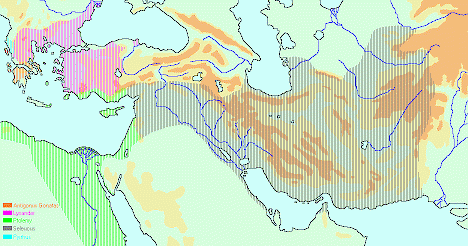
The first to strike was Lysimachus, who was frustrated by Pyrrhus attacks on Thessaly. He did not offer battle, but bought Pyrrhus' commanders, made diplomatic overtures, and in the summer, the king of Epirus had to return to his home land. Southern Macedonia and Thessaly were now part of Lysimachus' empire, which stretched from Thermopylae to the Danube and from the Ionian Sea to the river Halys in central Turkey.
However, Lysimachus' empire was built on sand, although in Thrace, his rule was unchallenged. He had ruled the country since the settlement at Babylon in 323 (text), thirty-eight years ago. But the other territories were new acquisitions: the eastern provinces had been occupied 15 years ago and Macedonia, with its strong feeling of independence and great past, was a very recent addition. There were strong resentments against the Thracian king, and one small accident would enough to upset the delicate balance.
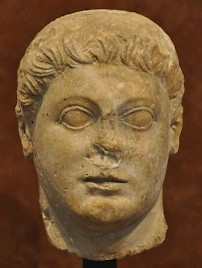
This incident happened in the first weeks of 282. It will be remembered that Lysimachus had married Nicaea, the daughter of Antipater (more). They had a son, Agathocles, Lysimachus' trusted right-hand man and the one who was appointed as successor. In 299, both men had married to daughters of Ptolemy: Lysimachus had taken Arsinoe as his wife, and Agathocles had married Lysandra. Now Arsinoe, seeing that she and her children would become subjects of her stepson and her sister, decided to blacken Agathocles' reputation, so that her own son would become king.
At least, this is what our sources say. It should however be noted that Demetrius was by now dead and that the first Ptolemy had died in January 282. It is possible that political motives also played a role, and it is likely that Agathocles was not entirely blameless. But whatever the reasons, Agathocles was killed by his father.
Immediately, Agathocles' wife Lysandra and his servant Philetaerus of Pergamon fled to Seleucus, who was, at that moment, in Babylonia. They asked him to come to their assistance. This was an offer Seleucus could not refuse: he could rightfully intervene in Thrace -where he could place the son of Lysandra and Agathocles on the throne, and he could also intervene in Egypt, where he could place Ptolemy Keraunos on the throne. The thought that he could also place himself on the two thrones may have crossed his mind.
In the winter of 282/281, he invaded Lysimachus' Asian possessions. He was a prudent man: before he set out, he had already appointed his son Antiochus as his successor. According to the eastern custom, Antiochus took over his father's wife (Stratonice I, the daughter of Demetrius), and he was made ruler of the eastern satrapies - as once the Persian crown prince, the mathišta, had been.
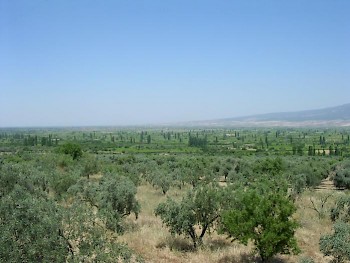
The army of the seventy-seven years old Seleucus met the army of Lysimachus, eighty years old, at Corupedium, in the west of Asia Minor, in February 281. By the end of the day, Lysimachus was dead. He had already built his tomb at Belevi near Ephesus, but was never buried in this mausoleum.
Seleucus proceeded to the west, where nothing could prevent him from adding Thrace and Macedonia to his empire. However, he was assassinated by Ptolemy Keraunos. We do not know his motives, although it is likely that Seleucus had made it too clear that he wanted to unite the empire of Alexander and did not want to give Keraunos and the son of Lysandra their shares.
Thus ended the life of Seleucus. In a few year's time, the four main players of the game of hellenistic state building had all died: Demetrius in 283, Ptolemy in 282, Lysimachus and Seleucus in 281. Their kingdoms had stabilized, and the men were succeeded by their sons: Antigonus Gonatas in Greece, Ptolemy II Philadelphus in Egypt, and Antiochus in Asia. Lysimachus' empire was the exception: not his son but Ptolemy Keraunos became king.
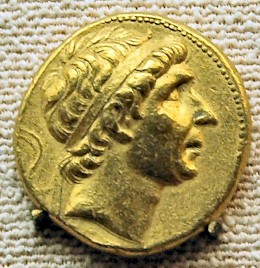
Although Ptolemy II and Antiochus immediately started a war, its impact was limited: the king of Egypt merely benefitted from the crisis in the Seleucid empire after the death of its founder. When he had taken Damascus and noted that Antiochus was as powerful as his father, an armistice was concluded. Antiochus accepted the defeat because he needed all his energy to organize the conquests in what is now Turkey. The First Syrian War had lasted less than twelve months (280-279).
The situation now seemed quiet. But there was to be one border correction and dynastic change.